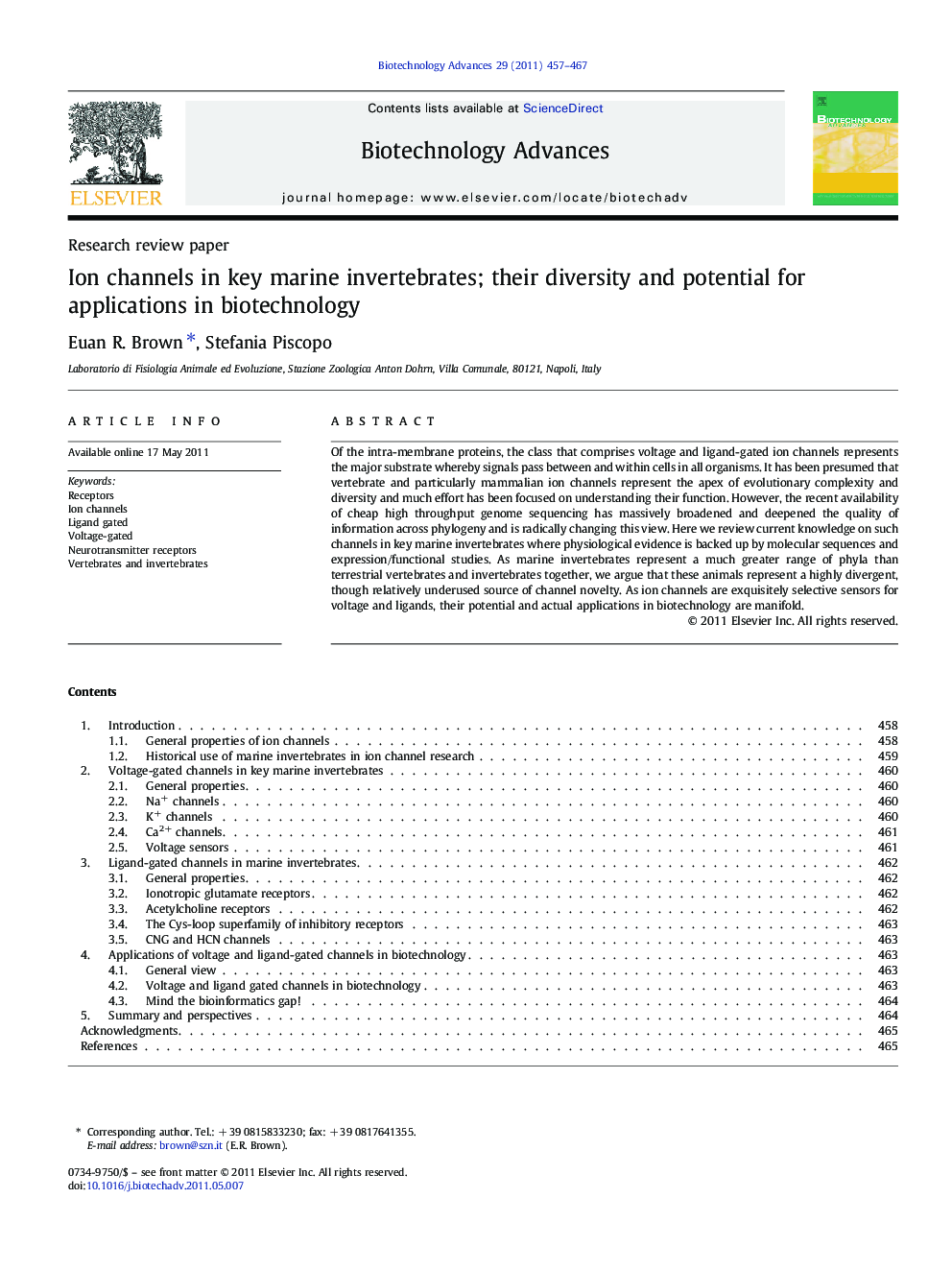| Article ID | Journal | Published Year | Pages | File Type |
|---|---|---|---|---|
| 14518 | Biotechnology Advances | 2011 | 11 Pages |
Of the intra-membrane proteins, the class that comprises voltage and ligand-gated ion channels represents the major substrate whereby signals pass between and within cells in all organisms. It has been presumed that vertebrate and particularly mammalian ion channels represent the apex of evolutionary complexity and diversity and much effort has been focused on understanding their function. However, the recent availability of cheap high throughput genome sequencing has massively broadened and deepened the quality of information across phylogeny and is radically changing this view. Here we review current knowledge on such channels in key marine invertebrates where physiological evidence is backed up by molecular sequences and expression/functional studies. As marine invertebrates represent a much greater range of phyla than terrestrial vertebrates and invertebrates together, we argue that these animals represent a highly divergent, though relatively underused source of channel novelty. As ion channels are exquisitely selective sensors for voltage and ligands, their potential and actual applications in biotechnology are manifold.
